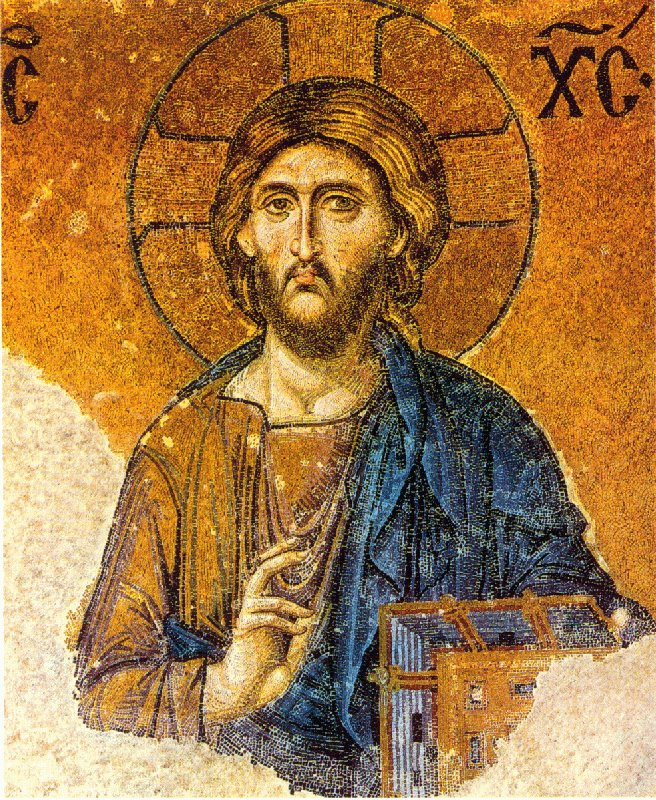“Don’t you know He has risen?”
Why do most Christians have crucifixes in their Churches and homes? To help answer this question, another question should be asked: Why did Paul preach Christ crucified? Doesn’t Paul know that Jesus was raised from the dead? Certainly he does! Paul believes that through the crucified and resurrected Christ we have freedom from sin and death. Apostolic Christians follow this Biblical example by displaying both the crucifix and the cross.
The Crucifix – Salvation in Christ
In the First Book of Corinthians, Paul announces that his preaching arises from the crucified Christ!
For Jews demand signs and Greeks look for wisdom, but we proclaim Christ crucified, a stumbling block to Jews and foolishness to Gentiles, but to those who are called, Jews and Greeks alike, Christ the power of God and the wisdom of God (1 Corinthians 1:22-24).
When Paul began speaking about his desire to reach the Corinthians for Christ, he did not come with eloquence or wisdom (1 Corinthians 2:1). What did he come proclaiming? Christ and Him crucified !
O foolish Galatians! Who has bewitched you? Before your very eyes Jesus Christ was publicly portrayed as crucified? (Galatians 3:1).
What do our eyes see in this publicly portrayed crucified Christ? The parallel between this passage and the crucifix are self-apparent. The crucifix is an image not easily dismissed by the human mind and a powerful display of historical truth. Christians believe the crucifixion and the resurrection are both decisive events. These truths are to be shared with boldness, not reduced, hidden, or ignored. The fullness of the Gospel, despite being repulsive and hard to gaze upon, is an integral part of apostolic Christian faith. Catholic Christians and Orthodox Christians boldly portray the horrendous torture our Lord went through, so that we may be free from wrath.
He Himself bore our sins in his body on the cross, so that, free from sins, we might live for righteousness; by his wounds you have been healed (1 Peter 2:24).
The Crucifix – Suffering for Christ
In some sects of Protestantism, a “health and wealth” gospel seems to prevail (name it and claim it preaching). In these Protestant traditions, suffering has no place in the life of the Christian. On the contrary, apostolic Christianity understands suffering much different. We are called to sacrificially follow Christ whether we are in good health and abundant prosperity, or, in poverty and painful suffering. When we visually observe the crucifix, we are reminded of the Biblical reality we are called to; which is a life of suffering. Ratzinger says:
A worldview that is incapable of giving even pain meaning and value is good for nothing. It falls short precisely at the hour of the most serious crisis of existence. Those who have nothing to say about suffering except that we must fight against it are deceiving us. It is, of course, necessary to do everything one can to lessen the suffering of the innocent and to limit pain. But there is no human life without suffering, and he who is incapable of accepting suffering is refusing himself the purifications that alone allow us to reach maturity. In communion with Christ, pain becomes meaningful, not only for myself, as a process of ablatio in which God purges me of the dross that conceals his image, but beyond me, for the whole, so that we can all say with Saint Paul: “But now I rejoice in my sufferings for you and so complete in my flesh what is still lacking in the afflictions of Christ for the sake of his body, the Church” (Colossians 1:24).
The crucifix calls to mind that suffering is a unifying experience with Christ as we “take up our cross” and follow Jesus (Matthew 16:24). Christ suffered, was crucified, buried, and resurrected for our transgressions. Not everyone will be called to suffer in an extreme way, but when we suffer we surrender completely to Christ’s mercy and grace. The crucifix is a reminder of our unity with Christ through whatever suffering we will endure in this life.
…but we also glory in our sufferings, because we know that suffering produces perseverance… (Romans 5:3).
Peter did not consider himself worthy to be crucified as Christ was, so he requested crucifixion upside down. Thomas, known as “doubting Thomas,” was speared to death in India. John the Baptist was beheaded. Likewise, the Apostle Paul was beheaded. Christians are called to suffer, at times, and we should never forget the suffering that our Lord endured. Early Christians were willing to suffer and give their life for Christ. The crucifix is a visual reminder of this reality.
The Crucifixion and the Resurrection
Common objections to the crucifix are centered on the idea that, since Christ was resurrected from the dead, we should not display the crucified or suffering Christ. In this way, Protestant fundamentalism inadvertently pits the crucifixion against the resurrection. This interpretation leads to an “either/or” theology. Consequently, if one displays a crucifix, the assumption of neglecting the resurrection is silently assumed. The apostolic Christian understanding is more complete based on a “both/and” theology. In other words, both the crucifixion and the resurrection of Christ are decisive and celebrated events in salvation history. Paul tells us that if Christ was not resurrected, our faith and hope are useless (1 Corinthians 15:17). This is precisely why Paul can say he was “crucified with Christ” (Galatians 2:19) and simultaneously proclaims a “living hope through the resurrection of Jesus Christ” (1 Peter 1:3).
Therefore, apostolic Christians humbly display both the cross and the crucifixion! We could never celebrate Resurrection Sunday without first having Good Friday! There is simply no crown without the cross! The empty Cross reminds us that we are to pick up our cross each day and follow Jesus (Matthew 16:24, Mark 8:34) and the crucifix is there to remind us of the price God paid for you and me!


